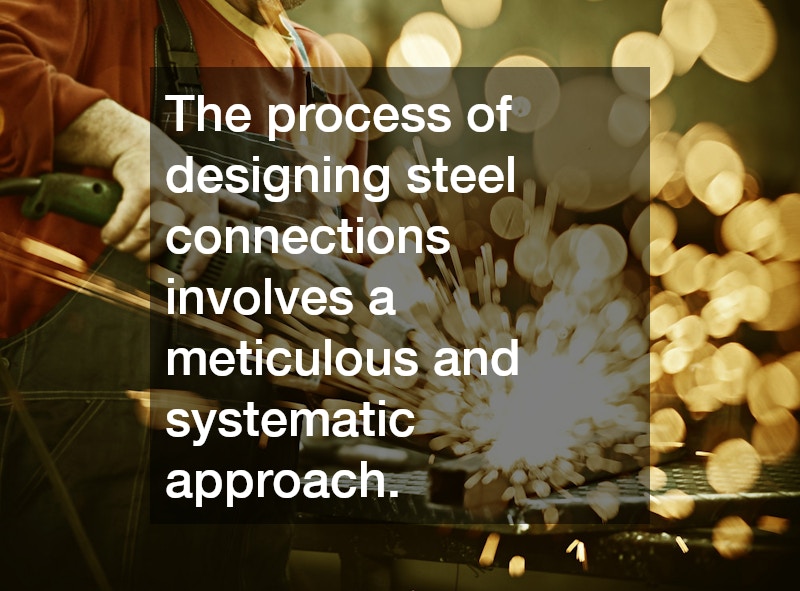Understanding steel connection design is crucial for anyone involved in the construction and engineering industries. Steel connections are the backbone of structural frameworks, ensuring the stability and integrity of buildings and infrastructures. They act as the glue that holds the various components together, providing the necessary strength and resilience. Without proper steel connection design, even the most well-thought-out constructions risk structural failure, which can lead to catastrophic consequences. Thus, mastering this aspect of design is essential to achieving a reliable and safe structural layout.
The process of designing steel connections involves a meticulous and systematic approach. It requires not just an understanding of engineering principles, but also a working knowledge of the materials and various types of connections available. The design process includes evaluating the forces that the connections will need to withstand and selecting appropriate connectors that can handle these loads. Engineers need to consider factors like tension, compression, and shear forces to ensure that the design will hold up under different conditions. Additionally, adherence to building codes and standards is imperative during the design phase, as it ensures compliance and safety.
In the realm of modern construction, steel connection design has become more sophisticated due to technological advancements. Software tools are now available, offering detailed steel layout solutions that enhance precision and efficiency. These tools allow engineers to simulate different scenarios and explore various designs without physically constructing them. The integration of digital technologies into traditional design processes not only speeds up production but also minimizes errors and material waste. This innovation marks a significant shift in how steel connection designs are approached in contemporary engineering practices.
Types of Steel Connections
Steel connections can be categorized into several types based on their function and configuration. The most common types include bolted and welded connections, each with its unique advantages and applications. Bolted connections involve the use of bolts and nuts, which are easy to assemble and disassemble, making them suitable for structures that may require future modifications. Welded connections, on the other hand, provide a permanent bond, offering superior strength and resistance against vibrations. However, the choice between these connections often depends on factors like project requirements, site conditions, and economic considerations.
Another important type is the friction connection, which utilizes the resistance force generated by the friction between two surfaces. This type is particularly useful in seismic zones, where additional damping is needed to absorb shocks and avoid structural failure. Friction connections can be designed to slip at predetermined loads, providing an added layer of safety and flexibility in dynamic environments. Alternatively, one might consider moment connections, which are primarily used to resist bending. These are typically found in frames where lateral support needs to be provided, adding rigidity to the structure against wind or seismic forces.
Moreover, shear connections play an essential role in handling loads that attempt to slide one part of the connection past another. These connections are pivotal in transferring shear forces, making them indispensable in most structural designs where such forces are pertinent. Engineers often use a combination of different connection types to cater to the specific needs of a project, optimizing for cost, strength, and ease of construction. The careful selection and design of these connections ensure the structure can withstand anticipated loads while offering longevity and safety. Understanding the diversity of steel connections is a crucial component for successful steel structure engineering.
Importance of Accurate Steel Layout Solutions
Accurate steel layout solutions play a significant role in the success of any construction project. The layout solution is essentially the blueprint outlining where and how each steel component will be connected, influencing the overall integrity of the structure. Miscalculations or inaccuracies in this layout can lead to inefficient use of materials, increased costs, and compromised safety. By employing advanced layout solutions, engineers can pinpoint potential issues and address them before construction begins, thus avoiding costly adjustments during the build phase. Additionally, precise layouts contribute to improved resource management, as they allow for accurate estimation of material needs, reducing waste and expense.
There’s a growing reliance on technology to produce accurate steel layout solutions, thanks to digital tools that enhance precision and efficiency. Modern software solutions can simulate complex designs and provide detailed insights into the structural dynamics, helping engineers make informed decisions. These tools allow for the integration of different design standards, ensuring compliance while still optimizing the layout for performance and cost-effectiveness. Furthermore, digital simulations offer a risk-free environment to test designs against a variety of stress scenarios, providing valuable data that can further refine the engineering process. This amalgamation of technology and engineering expertise is paving the way for more innovative and resilient structural designs.
Ultimately, the importance of accurate steel layout solutions cannot be overstated. They form the foundation upon which safe and reliable steel structures are built, influencing every aspect of construction from conception to completion. As construction projects continue to grow in complexity and scale, the demand for precise and efficient layout solutions will only increase. By investing in accurate steel layout solutions, engineers and construction managers can not only ensure the safety and durability of their projects but also achieve greater cost efficiency and sustainability. This emphasis on precision and practicality underscores the critical role that steel connection design plays in modern construction and engineering.
